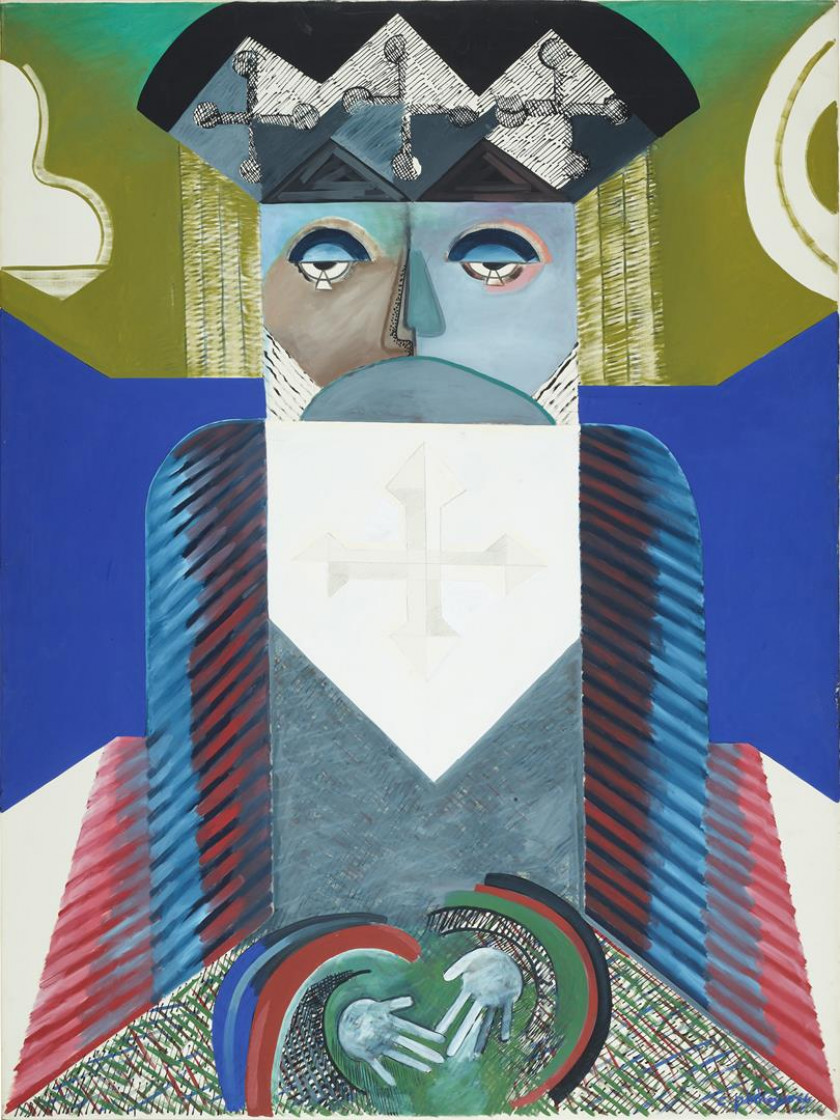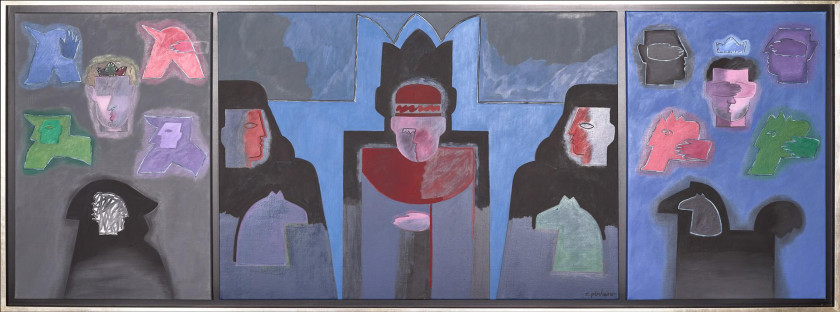D. Duarte (O Melancólico) [D. Duarte (The Melancholic)]
painting


1966
Oil on canvas
150,5 x 110,5 cm
Costa Pinheiro's series Kings, shown in Munich (Leonhard Gallery, 1966) and only later in Portugal, was of major artistic, aesthetic and historical importance in 20th century Portuguese art.
Returning to the figures of kings while in exile (Pinheiro went to Germany in 1963, staying until the 1990s) disturbed the prevailing ideological climate, which presented royalty in mythologising sagas, ripping them away from the reality of history. Pinheiro chose to correct this by humanising these figures, making them unexpectedly truly Portuguese.
In the aftermath of the democratic revolution of the 25th of April 1974, the series was once again forgotten due to the difficulty of thinking about the past, as if the fact that Portugal had been an old European monarchy was a stain. There was a desire to forget the recent past and, in this way, important historical dimensions were lost. Looked at from a distance, however, the works still question our identity. Bruno Marques, in a brief commentary, rightly wanted to see in “Duarte, the sensitive figure, essentially an educated man and a lover of culture and letters (...) forced to govern by destiny”, as if the task of governance would tear him away from the philosophical quiet he truly desired.
It is, in fact, an exemplary portrait, a synthesis of the whole series, of the human dimension it brought, while at the same time inventing another idea of portraiture, and another historical, critical and aesthetic place for this ancient genre.
The non-realistic figure occupies the entire foreground, dressed in simplified symbolism, observed both in Malévich's iconological discipline and in that of Pop, anticipating a new idea of painting that Germany took on subsquently: a harsh neo-expressionism consecrated by artists such as Polke, Baselitz and the Neue Wilde. Something that Portuguese art at the time was unable to grasp...
Bernardo Pinto de Almeida
